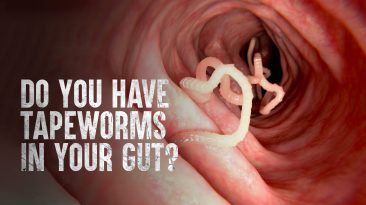Forget to answer that text, and dinner could be ruined. But take your eyes off the road, and you could eat your next meal through a straw. Brace for impact.
Modern technology has increased our safety on the road, but never forget the power behind this two ton speeding bullet. In 2016, Molei Wright and her boyfriend were driving through the newly fallen snow when a large truck blind side them.
Her vertebrae were crushed inside her neck, and Wright suffered an internal decapitation. But she defied the odds, and made it out of the crash alive. But at this speed, are seat belts effective?
Should you clean your cup holder? Will a computer save your life?
With nearly 1.35 million people killed in auto accidents each year, worldwide, chances are that at some point, you will be in a car wreck. Whether it’s your mistake, or a manufacturer’s defect, anytime the rubber hits the road, your safety is on the line. Follow these steps, and you might pass life’s next crash course.
Step 1: Lean Back
Unlike most accidents, car crashes offer little warning. Either you’re prepared, or you’re not. If you have a chance to react to an oncoming car, but can’t get out of the vehicle, lean back in the seat and brace yourself. Look forward but avoid leaning forward. So keep your head straight, and avoid turning sideways, to decrease the chance of injury.
Step 2: Secure Loose Items
A car crash has two phases. The first stage involves a collision between the vehicle and other objects. The secondary impact is a collision with the vehicle, the items inside, and you. Store your items in the compartments before you start the car, and avoid this hail of shrapnel. A report found that the Impact from a loose object will have a relative force equal to the object’s weight multiplied by the speed in which it travels. In this sudden impact, even your loose change could be fatal.
Step 3: Hit the Brakes
Right now, you have one goal. Slow down. Going 64 km/h (40 mph), versus 128 km/h (80 mph), could mean the difference between you walking away, or being carried away on a stretcher. But don’t pump your anti-lock brakes. What if you don’t have anti-lock brakes? Well, don’t stomp on the pedal, or the car could skid. And if you do lose control, steer into the direction of the skid.
Step 4: Buckle Up
According to the National Highway Traffic Safety Administration reports, 50% of accidental deaths are preventable by a seatbelt. Avoid sitting too close to the steering wheel. or you could hit the airbag at a full speed of 321 kph (200 mph.) Airbags travel faster than your vehicle, at about 321 km/h (200 mph). So keep a minimum distance of 25 centimeters (10 inches) from your chest to the steering wheel. And never put anything between your body and a seatbelt.
Step 5: Give Yourself Room
A seven-year study found that sudden lane changes caused about 17.0% of car crashes. So stop cutting people off. Be aware of your blind spots, and don’t assume the lane changing cameras will alert you to every car on the highway. Allow space for the other cars on the road. And never let the artificial intelligence in your car replace your judgment.
Step 6: Drive Sober
It’s a myth that a drunk body is relaxed enough to handle a crash. A 1986 study found that drunk drivers were more likely to suffer a serious injury or death. In the United States alone, impaired drivers account for one-third of vehicle-related injuries. And 66% of fatal crashes result from drunk driving.
Step 7: Watch Your Speed
Nothing’s more aggravating than the traffic between you and your loved ones. Reduce your chance of an accident by avoiding these high-traffic areas. You may think you’ll get home a second faster, but high speed accidents account for half of all vehicle-related deaths.
Step 8: Stay Awake
In 2015, 824 people died from car accidents associated with drowsy driving. Keep your body rested, and never drive when you’re tired. Driving on weekends, between midnight and 3 a.m., are the deadliest times on U.S. roadways. Be alert, and drive defensively, keeping your hands at the ten and two positions on the steering wheel. Stay vigilant at all times, and avoid distractions.
Step 9: Contact the Authorities
After the accident, turn off the vehicle, and call the authorities. If you’re not injured, use cones or flares to tell other drivers that your vehicle is disabled. Turn on your emergency lights, and hang a white shirt or rag from the rear of your vehicle. But if no one drives by, you better have kept your phone charged.
Step 10: Get Medical Treatment
At this moment, you may not know what injuries you’ve got. Neck injuries like whiplash can last for months and may require surgery, depending on the severity. A head injury requires immediate hospitalization, especially if your brain is bleeding.
If you realize that you’re hurt, stay still. Don’t risk making your injuries worse. Stay aware of your surroundings, and pace yourself behind the wheel, and you might make it out of the crash alive.
So you avoided a crash, but just barely. You’ve been up for days with no rest. How are you going to survive without sleep?
Sources
- “The Danger of Loose Objects in the Car: Challenges and Opportunities for Ubiquitous Computing2020.” star-uci.org.
- “Invulnerable Drunk Driver Called A Myth”. 1995. Los Angeles Times.
- “Self-driving cars have to be safer than regular cars. The question is how much.”. Stewart, Emily. 2019. Vox.
- “The First Steps Of Recovery After A Car Accident”. Ofer M. Zikel, MD. 2020. aurorahealthcare.org.
- “After a Horrible Car Crash, Her Odds of Survival Were Just 100 to One”. Bill Hangley Jr. 2020. ca.news.yahoo.com.
- “Why the Survival Car died an early death”. Collins, Paul. 2020. New Scientist.
- “How To Survive A Car Crash”. Wes, Siler. 2020. Gizmodo.


















